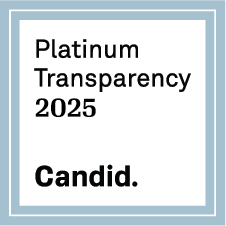The Story of Six Siblings
Cure Blindness Project joins the International Agency for the Prevention of Blindness (IAPB) in highlighting the importance of children’s eye health for World Sight Day 2024. For the next several weeks, culminating on October 10th, we’ll feature some of our favorite pediatric patients. Be sure to follow us on social media to see their stories.
Every outreach has a few patients whose stories stick with staff well after the last patient has returned home. For a team in Ethiopia, the memory of the Gelchu family who arrived seeking help to cure their six blind children and blind father may last a lifetime. Here is their story.
Twenty-year-old Dembi Gelchu is exhausted. The responsibility he carries is a heavy weight for someone so young.
Dembi cares for his six blind siblings (two sisters and four brothers) in addition to financially providing for them and his parents. Until recently, his father was also blind. (His dad attended an earlier Cure Blindness Project outreach and received free cataract surgery that restored his sight.)
“I live with them with my wife to support our families. I take care of them, help them go potty and work on the farm,” he says. Several of the siblings also suffer from Jigger disease which prevents them from walking normally.
News of a Cure Blindness Project outreach for pediatric patients arrived like a dream. With no resources and few options, the family knows the difference the free eye surgery made. The father had sight restored at an earlier outreach and is able to work again on the farm.
“This is the first time we’re ever had seven blind people in one family,” says Fekadu Merga Duffa, a logistics assistant for the Ethiopian team. Fekadu’s job also includes talking to patients and learning their stories to share back with the broader team. “This was unique,” he says of so much blindness in one family.
Doctors examine the children and determine four have treatable conditions. Unfortunately, two of the children can not be helped.
The children wait their turn, walking bravely towards the operating room with the assistance of staff. Pediatric surgeries require general anesthesia, unlike adult cataract surgeries. Surgeries complete, the waiting continues. This time to remove the bandages to see if the surgery is successful.
Once the gauze has been removed, the children look at the doctors’ faces with a mix of confusion and awe, unsure of what they’re seeing. Smiles start to break out over their faces. The doctor grins back as the realization sinks in. This child can see. And so can his sisters and brother.
For children with newly restored sight, the simple joy of kicking a ball is an unexpected treat. Something so common for children around the world but uncommon or even impossible for a previously blind child.
Their surgeon Dr. Sadik Taju lightly taps the ball back as the Gelchu siblings squeal in delight. Is there anything better than the sound of a laughing child?
"It is a big relief for me and my family,” says Dembi. “Thank you to Cure Blindness Project and Doctor Sadik.”
The Cure Blindness Project team empty their pockets to send the family home with whatever the team can pool together. 16,000 birr (or about $140 USD) will help the family. “They hold a special place in our hearts,” says the team of the desire to help.
Helping a child feels particularly special, a gift that allows a lifetime of opportunities previously lost due to blindness.
This World Sight Day, we proudly share stories of pediatric patients whose futures are brighter because Cure Blindness Project and partners were able to help them.







